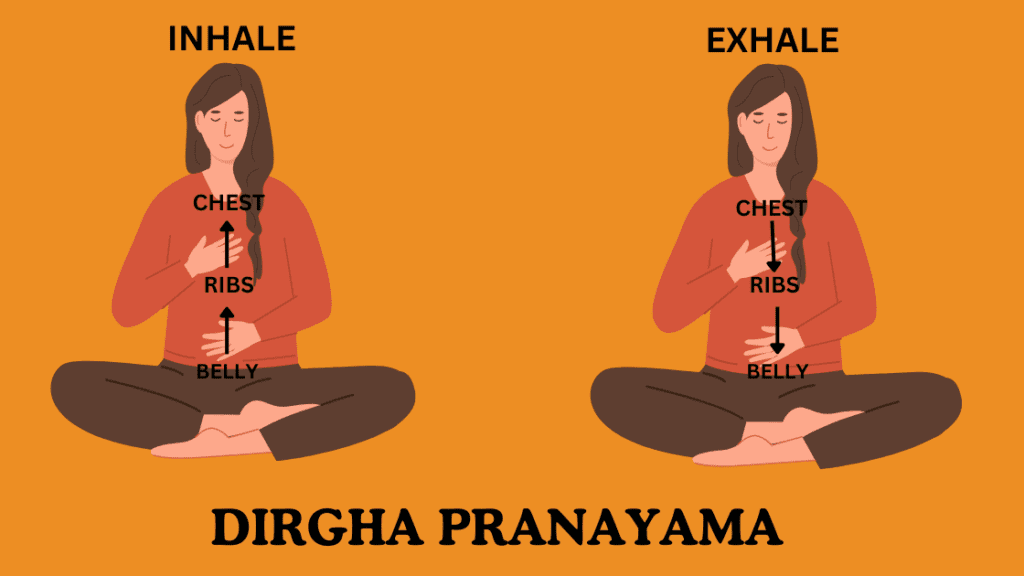Pranayama is a Sanskrit word that combines “prana” (air or breath) and “ayama” (expansion or restraint), which is a vital component of yoga practice. Pranayama is a conscious prolongation of inhalation, retention, and exhalation, which helps to balance the body’s energy and prepare it for meditate.
What is Pranayama ?
Pranayama is an ancient breathing technique that has been practiced for thousands of years in India. It is one of the eight limbs of yoga, as outlined by the sage Patanjali in the Yoga Sutras. The practice involves controlling the breath through various techniques, such as deep breathing, alternate nostril breathing, and breath retention. The primary goal of Pranayama is to increase the flow of Pranayama , or life energy, throughout the body, promoting physical health and mental clarity.
Different Types of Pranayama
There are differernt types of Pranayama techniques, each has its own uniqueness benefits and effects on the body and mind. Here is the list for some of the most common types of Pranayama in yoga.
1.Ujjayi Pranayama (Ocean Sounding Breath)

Ujjayi Pranayama, known as the “victorious breath,” involves breathing in and out through the nose with a soft hissing sound. This Ujjayi Pranayama technique helps to promote relaxation.to the body, calm the mind and also reduce stress.
2. Dirgha Pranayama (Three-Part Breath)

Also known as the “complete breath,” Dirgha Pranayama involves breathing into the lower, middle, and upper lungs. This Three-Part Breath technique helps to expand the lungs, that improve respiratory health, and also calm the nervous system.
3. Anuloma Viloma Pranayama (Alternate Nostril Breathing)

This Anuloma Viloma Pranayama technique involves closing one nostril with the thumb and breathing in through the other. The breath is then exhaled through the other nostril. Anuloma Viloma Pranayama helps to promote mental clarity and more focus in the body.
4. Bhastrika Pranayama (Bellows Breath)

Bhastrika Pranayama involves fast and forceful breathing air in and out through the nose. This Bhastrika Pranayama technique helps to energize the body, improve respiratory health, and stimulate the nervous system.
5. Kapalabhati Pranayama (Breath of Fire)

Kapalabhati Pranayama involves fast shallow breathing in and out through the nose. This Kapalabhati Pranayama technique helps to energize the body, improve digestion, and stimulate the nervous system.
6. Surya Bhedana Pranayama (Right Nostril Breathing)

Surya Bhedana Pranayama involves breathing in through the right nostril and out through the left. This Surya Bhedana Pranayama technique helps to improve digestion, and promote energy and vitality in the body
7. Chandra Bhedana Pranayama (Left Nostril Breathing)

This the opposite of Surya Bhedana Pranayama, in Chandra Bhedana Pranayama involves breathing in through the left nostril and out through the right.
Benefits of Regular Pranayama Practice
The benefits of regular Pranayama practice extend far beyond stress relief. Here are some of the key advantages:
1. Improved Respiratory Function:
Pranayama strengthens the respiratory muscles and increases lung capacity, making it easier to breathe deeply and efficiently.
2. Enhanced Mental Clarity:
By increasing oxygen flow to the brain, Pranayama helps to improve focus, concentration, and memory.
3. Reduced Anxiety and Depression:
Regular Pranayama practice can help to regulate mood and alleviate symptoms of anxiety and depression.
4. Boosted Immune System:
Pranayama promotes better circulation and oxygenation of the blood, which can enhance the body’s natural defense mechanisms.
5.Better Sleep:
Pranayama can help to calm the nervous system and promote relaxation, leading to improved sleep quality.
Conclusion
By Practising all these Pranayama technique we can transform our body and life. Please take out few minutes from your day to Practise all these yoga Pranayama. By Practising all these Pranayama daily we can experience a massive improvment in our physical and mental health and we can also experience increased in energy in our body.



Pingback: 20 Benefits of Yoga: A Path to Holistic Well-being